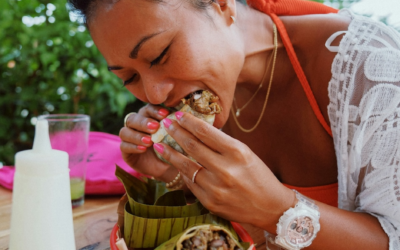How brands can utilise sociolinguistics to detect consumer movement toward progressive identities
Introduction: The case for sociolinguistics
In Southeast Asia, a region populated by nearly 700 million people, in which “minority” languages – varieties that are not spoken by the country’s majority – like Javanese and Sundanese, still have tens of millions speaking them, how are brands supposed to woo potential consumers in their own tongues?
Is this even necessary, when millions of South East Asians, like many in other regions outside of the Anglosphere, are picking up English, the de facto language of business worldwide as a way to secure social mobility? Yet, there remains something far more compelling about a brand which actively attempts to meet consumers on their own linguistic terms than one that waits for them to reach out.
To meet this need of marketers, an entire industry devoted to the twin tasks of translation and localisation has sprung up but despite the fact that this is far from a new development, large corporations can still be prone to disastrous gaffes despite their expertise in brand consulting.
Take the instance of Coca-Cola, which, in its attempt to capitalise on the revitalisation of Maori, New Zealand’s indigenous language, spoken by a historically underserved community, emblazoned “Kia ora (a common Maori greeting), mate”, on their vending machines.
However, what was supposed to be a cheeky blend of Maori and English to boost Coca-Cola’s affability and culture credibility revealed a superficial understanding of the people it tried to cater to; “mate” also happens to be how the Maori word for “death” is written.
Naturally, an invitation to say hello to one’s impending end was not well-received by thirsty passers-by who just wanted a refreshing drink.
While Maori, and hence this example, exists outside of South-East Asia, it is not as foreign to the region as one might think, as it shares a common ancestor with three national languages: Filipino, Malay and Indonesian, a relation that is preserved by the existence of a scattering of similar-looking, sounding and meaning words that evolved from common roots (compare Malay/Indonesian api, Maori ahi and Filipino apoy, all descended from Proto-Austronesian *sapuy).
This factoid further hints at how complex the linguistic histories of South-East Asia’s languages are intertwined. While one obviously does not need a degree or interest in ancient languages to make sense of the modern versions, languages continue to change even in contemporary settings.
A little knowledge in the field of Linguistics may help brands capture these shifts and overcome blind spots in existing translation and localisation processes and avoid appearing tone-deaf or patronising to the consumers they are chasing.
The idea of marrying consumer studies and linguistics, occasionally under the banner of “Brand Linguistics” has gained traction in recent years as a way to deepen customer analysis. Take WARC’s own article on how the sub-fields of phonetics (simply, how sounds are produced) and psycholinguistics (simply, how language influences and is affected by psychology), revealed that consumers associate specific consonants with ‘luxury’ because they are rarer in the language they speak and hence can be used in brand or product names to index scarcity, and hence, exclusivity.
However, though these two subfields are equally fascinating and important, applying them would not have salvaged Coca-Cola’s case. Culturally-sensitive linguistic analysis usually involves a dip into Sociolinguistics, which interrogates how cultural norms and narratives shape the way language is used and expressed, or, in reverse, how language use reveals those norms and narratives.
This article serves as a sampling of how this discipline can inform brand strategy and the approach to qualitative market research. For simplicity’s sake, it will zoom into specific words, but readers should note that while not demonstrated here, that even phrases and sentences can be analysed through the lens of Sociolinguistics.
One obvious way in which language shift happens is when neologisms – new words or variations and combinations of words – enter a language’s vocabulary to account for new concepts, such as new technologies that may not have previously had dedicated words to express them (think cryptocurrency in English).
Occasionally, if enough neologisms are coined by a specific demographic, or in a certain environment in a relatively short period of time, a certain register – a variation of that language, sometimes called ‘slang’ – may be recognised.
Take the example of bahasa gaul, a colloquial variety of Indonesian spoken mostly by youth in urban centres such as Jakarta. Speakers playfully modify words from various languages – formal Indonesian, Javanese, English and others, abbreviating and combining them such as in the example of jaim, a shortened version of a blend between Indonesian jaga (to take care of) and English loanword imej (image).
Linguistic anthropologist Nancy J. Smith-Hefner notes that Bahasa gaul arose from a desire in young Indonesians to come up with way of speaking with their peers that better reflected their lived experiences as individuals who were increasingly globalised and open to the import of foreign influences while maintaining local pride, as represented by a mix like jaim.
Other linguistic processes such as abbreviation and word reversal indicate a desire to subvert the traditional hierarchy embedded in the variant of Indonesian taught in schools and used in business and politics, and with which they may use with their elders, to push for greater egalitarianism.
So what does this mean for brands and customer analysis? Should they start adopting the “lingo of the youth” in an attempt to mimic the speech of Gen Z consumers they might be pursuing? Another instance of Bahasa gaul is ngab, a scrambling of bang, itself a shortened version for abang (brother), and can be roughly translated as ‘bro’. Is it not advisable for marketers to beckon younger male consumers with ngab to appear relatable?
Probably not, or at least not before further investigating the unspoken rules which govern how Bahasa gaul may be used appropriately without being seen as “trying too hard” or worse, infringing on the safety of in-group spaces, which savvier youths already suspect corporate entities of doing.
Who exactly qualifies as ngab and what qualities it indexes is itself still in flux. Gisela Swaragita of the Jakarta Posts writes that ngab subculture, associated with stereotypically male-dominated interests: custom motorcycles, heavy metal music, tattoos, has come under fire for spreading beliefs tied to toxic masculinity.
Yet concurrently, certain influencers associated with ngab subculture are championing for image reform by admonishing misogynistic behaviour and supporting social activists. Its scrambled nature perhaps reflects that ngab subculture is a site in which meanings of masculinity are being reconstituted and renegotiated.
The finding, therefore, is not always the words themselves, but how their emergence is driven by a cultural attitude or orientation which brands can use to better understand the consumer pulse.
Implications
- On a consumer qualitative market research level: It is not sufficient to only look at texts in standardised forms of languages used in official communications; more recently coined “slang” terms may often reveal interesting changes in sociocultural dynamics and identity formation.
- On a communications strategy level: Brands need to go beyond translating words, and incorporating them into their communications mix, but must understand the intentions behind linguistic processes that form new words and phrases and find ways to mirror consumer sensibilities to establish more credibility in their localisation efforts.
When old words take on new lives: Hapag and progressive Filipino culture
Though bahasa gaul is a non-standard variety of Indonesian, change may also occur in existing words in the dominant standard language of a market, albeit in subtler ways. We turn to the Philippines for the next case study.
It is estimated that one third of its national language, Filipino, the standardised version of Tagalog, comprises Spanish loanwords that were introduced and assimilated into speech during the 333 years of Spanish colonial rule over the country that ended at the turn of the 20th century. Spanish loanwords, in some cases, have displaced the indigenous Tagalog words. In other cases, they co-exist, as in Spanish-originated lamesa (or mesa) and indigenuous hapag, both of which are synonyms for table. In fact, in reference to furniture lamesa may be used more frequently for generic tables, as hapag originally referred to a specific kind of short-legged table made from bamboo, and is only more commonly used in compounds such as hapag-kainan (dining table).
In a culture in which the preparation and consumption of food still holds great significance in social bonding, it perhaps makes sense that it is the indigenous term that is preserved in the most salient symbol of the communal dining space, something which has not gone unnoticed by various actors.
Consider the following modern uses of the word hapag in local contexts:
- Hapag MNL, a private dining restaurant that opened in 2017 that serves “progressive Filipino cuisine” championing local flavours and ingredients.
- HAPAG KAY PBBM, a government program launched this year to boost food security by promoting urban agriculture.
In both cases, hapag is likely used to leverage on the more “authentically local” and emotional connotations it possess compared to its Spanish-originated counterpart, to emphasise on how these efforts are local initiatives which utilise Filipino soil in service of purely local interests. This desire to forefront what is indigenous, breaking free from earlier narratives which may have romanticised any colonial vestiges of the past, is also sometimes shared by proponents who wish to erase any loanwords from Tagalog to return it to its “original” or “pure” form.
Even international brands like IKEA have taken notice of this, with their Hapag advertisement that centres around the mutual acceptance of a son as gay and a father as someone who does drag, as a way to suggest that it is not just offering pieces of furniture, but foundations on which new family structures can be built on to further local narratives of inclusivity and acceptance.
Implications
- On a consumer qualitative market research level: Understanding the etymologies (origins) of words, how they are used in an increasing or decreasing number of contexts, and comparing them against each other are all important in determining deeper linguistic meanings that only local consumers usually pick up.
- On a communications strategy level: Concepts and even objects can be translated in a variety of ways and hence it is important for brands to be careful in their selection of ones with the right connotations for their needs, and hopefully that are attached to aspirational and forward-looking cultural narratives.






